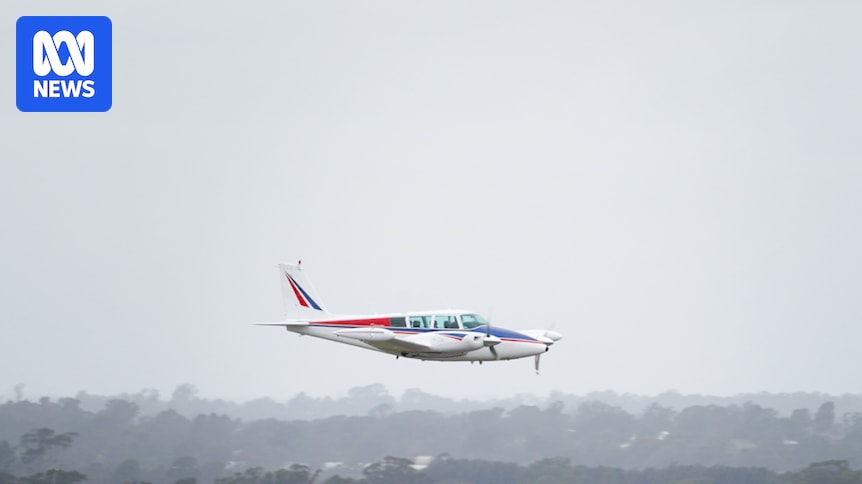The first plane has officially taken off and landed at Australia’s newest international airport in Western Sydney, to the delight of a small but enthusiastic faction of dedicated planespotters.
Six years after construction began at Western Sydney Airport, a test pilot landed on the tarmac in a small Piper PA-30 Twin Comanche aircraft, successfully completing a series of landing and take-off runs ahead of the introduction of larger passenger planes scheduled to begin using the runway two years from now.
“It’s absolutely fantastic, surreal,” said locals Angela and Darren, who went to witness the milestone.
Locals Angela and Darren went to see the spectacle with their son. (ABC News: Keana Naughton)
“It’s something I can speak to the grandkids about. I’m speechless.”
Another enthusiast, Ruby, thought it was “very cool”, and said she would be telling her mum and dad it was high time they all “take a holiday”.
While Ruby will have to wait, it will not be for long, with the multi-billion dollar project on track for its scheduled opening at the end of 2026.
Ruby said she will be telling her parents it’s time to take a holiday after witnessing the first plane take off and land. (ABC News: Keana Naughton)
The first plane has landed at Western Sydney Airport, six years after construction began. (ABC News: Keana Naughton)
“That’s the moment I play out in my head, when [welcoming] our first passenger aircraft to Western Sydney Airport, and we have people putting their bags into the baggage system,” CEO Simon Hickey said.
It has taken thousands of hours of work to get to this point, but the construction phase is largely over, the airport said.
Today’s flight was to trial the landing lights on the tarmac and more pressure tests will be underway as the massive project nears completion.
Western Sydney Airport CEO Simon Hickey said he had “played out this moment in his head”. (ABC News: Keana Naughton)
Airport on track for 2026 opening
Today’s milestone marks a critical moment for the airport near the Blue Mountains, the first new airport since Melbourne’s Tullamarine opened more than two decades ago.
The project will eventually have capacity for up to 10 million passengers and about 81,000 air traffic movements a year by 2033.
Major carriers including Qantas and Jetstar have already signed deals to operate out of the site 24-hours a day, seven days a week airport.
Mr Hickey said he was “confident” it was on track to open at the end of 2026.
“This really signifies that we are moving from a construction phase to a testing and commissioning stage,” he said.
